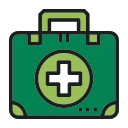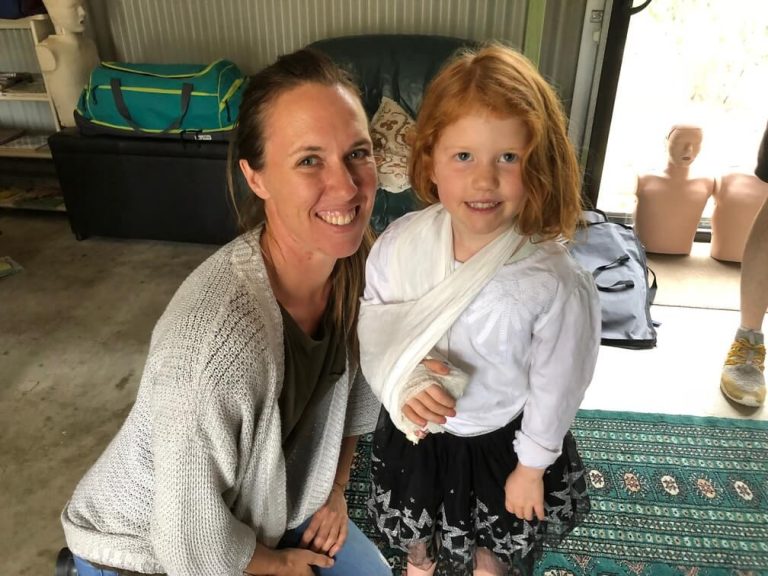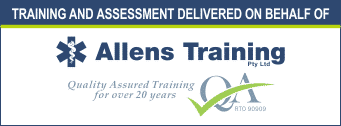Imagine you’re in your living room, and suddenly, your child collapses and starts convulsing. It’s a terrifying moment, and you feel an overwhelming rush of panic and helplessness. Seizures can be a frightening experience, not just for the person experiencing them but also for those witnessing them. The uncertainty of what to do and the fear of making things worse can paralyze even the calmest individuals.
But here’s the good news: knowing how to provide first aid for seizures can make all the difference. By learning a few simple steps, you can help ensure the safety and well-being of someone experiencing a seizure, reducing the risk of injury and potentially saving their life.
Seizures are more common than you might think. Around 1 in 10 Aussies will experience a seizure at one point in their life.
Whether you’re at home, at work, or out in public, being prepared to respond to a seizure is a crucial skill.
This guide will walk you through the essential steps of first aid for seizures, providing you with the knowledge and confidence to act effectively. From understanding what seizures are and recognizing their symptoms to detailed first aid steps and post-seizure care, we’ve got you covered.
Let’s dive into the essential steps you need to take to help someone experiencing a seizure, so you can be ready to act swiftly and confidently when it matters most.
Table of Contents
Understanding Seizures
Seizures are electrical bursts in the brain that disrupt the normal flow of electrical signals.
Imagine the brain as a city powered by electricity, where each suburb represents different functions like movement, speech, and consciousness.
When a seizure occurs, it’s as if there’s a massive power surge in the city. This surge overwhelms the electrical grid, causing lights to flicker or go out in some neighborhoods, while others might experience an overload.
This disruption can result in a variety of symptoms, depending on where in the brain the disturbance occurs and how widespread it is:
How Seizures Affect the Brain:
When the brain has an electrical overload, it can either affect the whole brain, or just a part of it.
Think of it like this: If the power surge is localized, only a few blocks might experience flickering lights or outages. However, if the surge is widespread, the whole city might go dark or experience chaotic power fluctuations.
In like manner, how much and where the electrical activity occurs in the brain can affect the symptoms of a seizure.
Tonic-Clonic (Grand Mal) Seizures:
This seizure affects most of the brain. A person who has a tonic clonic will suddenly lose consciousness followed by stiffening (tonic) and jerking movements (clonic). This is like the big power surge through the city causing it to overload.
Absence Seizures:
An absence seizure is like a “power outage in the city.” Because of the sudden electrical activity a person with an absence seizure will almost “shut down.” It’s like the brain is on pause.
The person will suddenly lose awareness of what is around them and often stare blankly in the distance unable to recognise or respond to what is happening around them.
Focal Seizures:
These start in one area of the brain and are more localised bursts of energy. Think of it as a power surge through one “suburb of the brain.” This means that usually it does not cause loss of consciousness.
Symptoms might include unusual sensations such as a sudden feeling of joy, anger, sadness, or nausea. There may also be sensory symptoms like tingling, dizziness, and visual disturbances. During these seizures, the person remains aware and can often describe what is happening. Here’s a video that shows what focal seizures look like.
Common Causes:
What is the cause of these power surges? Seizures can result from various triggers and underlying conditions:
- Epilepsy A chronic disorder that often leads to recurrent seizures.
- Head Injuries: Trauma to the brain can cause seizures.
- Infections: Conditions like meningitis or encephalitis.
- Stroke: Disruption of blood flow to the brain.
- Genetic Factors: Some individuals are more prone to seizures due to inherited conditions.
- Fever: High fevers, particularly in young children, can trigger seizures.
- Other Triggers: Lack of sleep, stress, flashing lights, alcohol, and certain drugs can precipitate seizures in susceptible individuals.
Recognizing the Signs and Symptoms
Spotting a seizure isn’t always straightforward. Seizures can manifest in various ways, and recognizing the signs early can help in providing timely and effective first aid. Here are some common signs and symptoms to watch for:
General Symptoms
- Convulsions: Sudden, uncontrollable jerking movements of the arms and legs.
- Staring Spells A person may appear to be staring blankly into space and be unresponsive for a brief period.
- Sudden Collapse: A person may suddenly lose consciousness and fall to the ground.
- Uncontrolled Movements: These can include twitching or jerking of the body, limbs, or face.
- Loss of Consciousness: A person may become completely unresponsive and unaware of their surroundings.
- Breathing Difficulties: Irregular breathing or temporary cessation of breathing can occur during a seizure.
Specific Signs for Different Types of Seizures
Tonic-Clonic (Grand Mal) Seizures:
- Tonic Phase: The body stiffens, and the person may cry out or groan as air is forced out of their lungs.
- Clonic Phase: This follows the tonic phase, characterized by rhythmic jerking of the limbs and face. The person may bite their tongue or lose control of their bladder or bowels.
- Post-Seizure State: After the seizure, the person may be confused, fatigued, and have a headache.
Absence (Petit Mal) Seizures:
- Brief Lapses in Awareness:The person may suddenly stop what they are doing and stare blankly for a few seconds.
- Automatic Movements: These might include lip-smacking, chewing, or blinking.
- After Seizure: The person typically resumes their activity immediately with no memory of the seizure.
Focal Seizures:
Motor Symptoms: Jerking movements in one part of the body, such as an arm or leg.
Sensory Symptoms: Unusual sensations like tingling, dizziness, or visual disturbances.
Psychic Symptoms: Intense feelings of déjà vu, fear, or euphoria.
Repetitive Movements: Hand rubbing, chewing, or walking in circles.
Altered Awareness: The person may seem dazed and confused, unable to respond appropriately.
In this Reddit Thread you’ll notice how different focal seizures can feel unique and challenging. Knowing what a seizure is like makes it less scary and helps you to be able to act rationally and calmly.
First Aid Steps
When someone has a seizure, the first step is to stay calm. Your calmness can help others stay composed too. Here’s what you should do:
During the Seizure
1.Stay Calm and Time the Seizure.

2. Clear the Area of Dangerous Objects.
Move objects away from the person to prevent injury. This includes furniture, sharp objects, and anything else that could cause harm during the seizure.
For example, move chairs, tables, and sharp items like kitchen knives or scissors. If the person is in a hazardous location, such as near stairs or a swimming pool, gently guide them to a safer area if possible. In some cases, if they could fall from a height you may need to give a quick but decisive push to keep them safe.
3. Cushion Their Head.
Place something soft, like a folded jacket or a pillow, under their head to protect it from injury. If nothing is available, use your hands to cushion their head.
8. Stay with the Person.
Remain with them throughout the seizure and offer reassurance as they regain consciousness. Speak calmly and comfortingly to help orient them.
If the person is unresponsive and not breathing normally, call emergency services immediately and start basic life support if you are trained to do so.
Post-Seizure Care
When the storm has passed and the seizure ends, the immediate focus shifts to ensuring the person recovers safely. Think of it as the calm after the chaos, where your actions can greatly impact their comfort and well-being.
1. Turn Them Onto Their Side.
Once the seizure ends, gently roll the person onto their side. Why is this so important? Because their will often be fluid in the airways after a seizure. This simple move helps keep their airway clear and prevents choking on saliva.
2. Check Their Breathing.
Take a moment to ensure they’re breathing properly. If their breathing is irregular or they’re not breathing at all within 30 seconds of the seizure ending, it’s time to call emergency services and get to CPR. It’s a critical check that can’t be skipped.
4. Reassure and Orient Them.
They will likely be dazed, confused, and/or exhausted. Often because of the overload, they may not remember where they are or what has happened. Vomiting and bowel movement’s can occur during a seize which can be embarrasing.
Speak to them calmly and reassuringly. Let them know where they are and what happened. It’s like waking someone from a deep sleep—they need gentle guidance to reconnect with their surroundings.
They might need to sleep or rest for a while. Make sure they’re in a safe, comfortable position, free from anything that could cause harm. Don’t leave them alone until they’ve significantly improved.
Should you call the ambulance?
Not every seizure requires a call to the ambulance—sadly, because seizures are so common ambulances generally don’t attend every one. However, there are a number of situations where you should dial those emergency numbers without hesitation:
1. The Seizure Lasts More Than 5 Minutes.
If the seizure drags on beyond 5 minutes, it’s time to call for help. Think of it as a crucial threshold—past this point, the situation becomes more serious and requires medical intervention.
2. Another Seizure Starts Shortly After the First.
If there are two seizures within 10 minutes it’s time to act. This relentless pattern can indicate a more severe underlying issue that needs immediate attention.
3. The Person is Injured During the Seizure.
If they’ve hurt themselves, such as a head injury or severe cuts, call for medical assistance. Addressing injuries quickly can prevent complications and promote better recovery.
4. Breathing Difficulties After the Seizure.
If they have trouble breathing or their breathing doesn’t return to normal after the seizure, get emergency help right away. Breathing issues are critical and need prompt attention to ensure the person’s safety.
5. It’s the Person’s First Seizure.
First-time seizures need a medical evaluation to determine the cause and appropriate treatment. Without a known history, it’s essential to get a professional assessment to rule out any serious conditions.
6. The Seizure Occurs in Water.
Seizures in water can be life-threatening. Ensure their safety and call emergency services immediately. The risk of drowning or inhaling water makes this an urgent situation.
8. You are in Doubt.
If you’re unsure whether the situation requires emergency services, it’s always better to err on the side of caution and call for help. When in doubt, it’s safer to seek expert
advice than risk potential harm by waiting. There will always be extenuating circumstances for example… if someone is pregnant, or has diabetes, where you’ll need to call.
What Not to Do During a Seizure
When someone is having a seizure, it’s just as important to know what not to do as it is to know what to do. Here are a couple of critical don’ts to keep in mind:
First, don’t put anything in their mouth. Despite what you might have seen in movies, you should never place anything between the person’s teeth during a seizure. This can cause serious harm, including b choking. The old myth that someone might swallow their tongue is just that—a myth. Your focus should be on keeping them safe in other ways, not trying to wedge something between their teeth.
Second, don’t restrain their movements. Trying to hold the person down or restrain their movements can lead to injuries for both you and them. The issue during a seizure is in the brain, not the body’s movements. Let the seizure run its natural course. Your job is to clear the area of dangerous objects and keep them safe, not to control the seizure itself.
By knowing what not to do, you can avoid common pitfalls and ensure you’re providing the best care possible. It’s all about keeping the person safe and letting the seizure pass without interference. These don’ts are just as vital as the dos, rounding out your knowledge and helping you stay calm and effective in an emergency.
Management Plans

Also, document the seizure. Take note of what happened—how long the seizure lasted, what kind of movements they had, any potential triggers, and how they seemed afterward. This information can be vital for their healthcare provider-—it all helps piece together the bigger picture.
Seizure Management Plans
Having a personalized seizure management plan is a game-changer for anyone who experiences seizures. These plans ensure that everyone, from family members to colleagues, knows exactly what to do if a seizure occurs, providing clear and actionable steps that reduce anxiety and improve emergency readiness. By outlining specific triggers, medications, and first aid instructions, these plans offer a tailored approach that ensures consistent and effective care, minimizing the risk of improper handling.
Seizure management plans are essential in various settings, including at home, workplaces, schools, and childcare centres. They provide a sense of security and preparedness, making it easier to manage seizures confidently. Whether you’re a parent, teacher, co-worker, or friend, having a plan in place means you’re equipped to respond swiftly and appropriately, ensuring the safety and well-being of the person experiencing seizures. This preparedness not only enhances safety but also offers peace of mind to everyone involved.
Preventive Measures and Safety Tips
When it comes to managing seizures, taking proactive steps can make all the difference. Let’s be real—seizures are unpredictable and can be downright scary, but there are plenty of ways to take control and create a safer environment.
Regular Medication Adherence
First off, if you’ve been prescribed anti-seizure medications, sticking to your medication schedule is non-negotiable. Skipping doses can throw everything out of balance, so make it a habit to take your meds like clockwork and always consult your doctor before making any changes.
Creating a Safe Home Environment
Now, let’s talk about making your home seizure-safe. It’s all about reducing risks and staying prepared:
- Install Safety Devices: Padded furniture and safety gates at the top of stairs can prevent nasty falls. It’s like baby-proofing but for adults—better safe than sorry.
- Remove Sharp Objects: Keep sharp and breakable items out of reach.
- Use Non-Slip Mats: Bathrooms and kitchens can be hazardous, so throw down some non-slip mats to prevent falls.
- Avoid Heights: Steer clear of activities that involve heights or heavy machinery unless you’ve got someone around to keep an eye on you.
Wearing Medical Identification
A medical ID bracelet or necklace can make things easier. In the event of a seizure, it tells bystanders and emergency personnel about your condition and how to help you. It’s essential if you’re alone or in an unfamiliar place.
Keeping a First Aid Kit Handy
Because of the slips, falls and damage that can be done during a seize- having a first aid kit is vital.
Dressings and bandages can help with any bleeding that might occur, and a sling and compression bandage can help with sprains or strains that could occur,
First Aid for Seizures: Help Someone in Need
Alright, let’s wrap this up. Dealing with seizures can be intimidating, but being prepared makes all the difference. Whether you’re the one experiencing seizures or you’re a friend, family member, or coworker, knowing what to do is crucial.
First and foremost, first aid is your go-to. Stay calm and follow the essential steps: time the seizure, clear the area of dangerous objects, cushion the person’s head, and turn them onto their side once the seizure ends. These actions help prevent injuries and ensure the person’s safety. Remember, don’t put anything in their mouth or try to restrain them. Let the seizure run its course.
Now, if you’re looking to be fully prepared, why not take a first aid course? At CPR Course Brisbane, we offer the HLTAID011 Provide First Aid course, which is designed to equip you with the skills and confidence to handle a variety of emergencies, including seizures. We’re proud to be Brisbane’s top-rated first aid training provider, offering great videos in our online pre-course training to ensure you’re ready to tackle anything.
We have multiple convenient locations across Brisbane with free parking:
North Brisbane:
- Albion: 14 McLennan St, perfect for inner city and CBD areas.
- Chermside: 240 Hamilton Rd, ideal for northern suburbs.
- Deagon: 21 Braun Street, great for Sandgate, Boondall & Redcliffe.
- Burpengary: 2/9 North Shore Drive, convenient for North Lakes and Morayfield.
- Carseldine: 1910 Gympie Rd, best for outer northern suburbs.
South Brisbane:
- Capalaba: 26-28 Finucane Rd, serves Redlands and Cleveland.
- Carindale: 68 Meadowlands Rd, convenient for South Brisbane residents.
We also offer onsite group training and Automated External Defibrillators (AEDs) to ensure comprehensive preparedness.
So, whether it’s through a quick refresher on first aid steps or making your home a safer place, every little bit helps. Let’s keep building awareness, fostering understanding, and creating a world that’s safer and more inclusive for those with epilepsy.
And remember, you’re not alone in this journey. Together, we can make a difference.
Ready to get started? Book your course today and be prepared to make a real impact.











